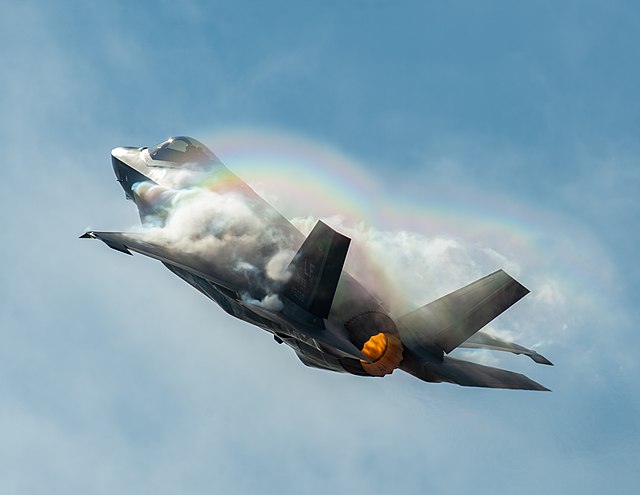Thrust is a reaction force described quantitatively by Newton's third law. When a system expels or accelerates mass in one direction, the accelerated mass will cause a force of equal magnitude but opposite direction to be applied to that system.
The force applied on a surface in a direction perpendicular or normal to the surface is also called thrust. Force, and thus thrust, is measured using the International System of Units (SI) in newtons, and represents the amount needed to accelerate 1 kilogram of mass at the rate of 1 meter per second per second. In mechanical engineering, force orthogonal to the main load is referred to as static thrust.
A Lockheed Martin F-35 Lightning II aircraft performing a vertical climb using its Pratt & Whitney F135 jet engine, which produces 43,000 lbf (190,000 N) of thrust.
The newton is the unit of force in the International System of Units (SI). It is defined as , the force which gives a mass of 1 kilogram an acceleration of 1 metre per second squared.
A carabiner used in rock climbing, with a safety rating of 26 kN when loaded along the spine with the gate closed, 8 kN when loaded perpendicular to the spine, and 10 kN when loaded along the spine with the gate open.


